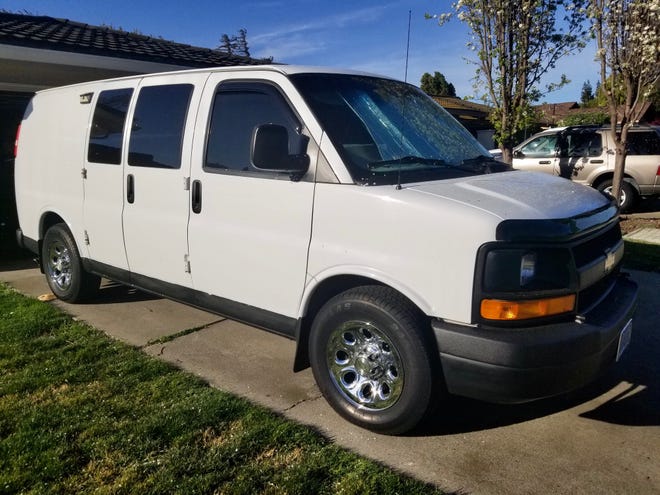We recently have taken two relatively long vacation drive-trips, the first up to Glacier and Yellowstone national parks, Montana and Wyoming, end of February, where we spent our nights in nice but inexpensive motels, and currently in Denver, housesitting a friend’s home, then moving on to explore Great Sands and Mesa Verde national parks and other Colorado delights. On this trip, we will camp a few nights, and spend others in pleasant but economical Colorado and Utah motels.
With gasoline prices skyrocketing, we have honed our secrets for inexpensive travel: Use an economical vehicle and make sure it is ready for the road. For campgrounds, plan ahead; consider federal campgrounds (such as National Parks/Forests, Bureau of Land Management, Corps of Engineers), where a federal senior pass (ages 62 and older) saves you half-off already reasonable campground prices and gets you into national parks and monuments free. Consider free dispersed camping in many of those locations.
For motels, we book late afternoon on the day we need lodging, using Booking.com or Priceline. To deal with cost of gasoline, downsize and lighten your load and use the phone app GasBuddy to find the best petrol price. We currently own two small travel trailers, but plan more use of our SUV coupled with our Napier Backroadz tent.
Consider camping in a van conversion or SUV. A Stockton friend, John Paval, recently converted a Chevy van for camping. I asked him why a van, and, why this one?
“I found plentiful advice by searching for ‘van conversions’ on the internet,” John said, “and vans offer a lot of interior room and relatively good gas mileage compared to large RVs or pulling a midsize trailer.”
He picked a used commercial half-ton van, found online. He removed the inside racks and was able to resell them, then ran furring strips, added insulation, some shelves and a ready-made cabinet found at Lowe’s, installing a sink with running water, and an electric refrigerator.
He added two deep cell batteries, which can be plugged into shore power, and has an inverter to provide 110V power when on the road.
John uses a camp stove for cooking, and notes “I eat out a lot, sampling local fare and enjoying small towns along the way.”
He also has a barbecue built for boating that swings out one of the van doors. He added a futon for a bed for two, which folds up into a nice couch for seating; cost was $13,000 for the van, and about $5,000 in the conversion.
“With careful driving and keeping my MPH down, I get 18 to 20 miles per gallon,” he said. “I also use dispersed camping in federal lands (often known as Boondocking), and, before heading off later in the season to Kansas and points in between, I’ll do a full vehicle check, changing fluids, add new filters and drive conservatively, for maximum gas mileage.”
For comparison, I’ll offer our experience with our smaller SUV, a four-year old Ford Escape. I have done modest modifications for storage and sleeping by using scrap 3/8-inch plywood to raise the floor 7 inches (with backseat folded flat), creating storage for four plastic containers underneath for camping equipment. Sleeping area is 6 foot 2 inches long by about 4½ feet wide (adding four-inch foam sleeping pad), cozy for two people. We already owned the Escape, and conversion costs were only about $300.
To offer even greater elbow-room, we added a Napier Backroadz SUV Tent for $250 and have used it several times. The tent adds a 10 foot x 10 foot room addition, nicely connecting to the open back hatch of our Ford Escape. And, the tent can be left in place, while we take the SUV to run errands or go exploring. Careful driving yields about 29-30 MPG, not bad for a comfortable rig for two people.
Tips for economical traveling?
Paval and other traveling acquaintances all agree on the basics:
Make sure your vehicle is well tuned, and check to see when you last changed your engine air and oil filters. Ensure your tires are fully aired up — many add several pounds more than recommended to the tires of their vehicles. Drive your vehicle like you have an eggshell between your foot and the gas pedal, and, for best mileage, keep your speed below 65 and use your cruise control.
Better, when in no hurry, take back roads to your destination and keep speed between 55 and 60 miles an hour — you’ll also see many more scenic wonders this way. With new air filter, fully aired tires and cautious driving, I got almost 31 miles per gallon (even though averaging almost 70 mph on Interstate 80), taking the sting out of gasoline at $3.88 (Colorado) to $5.79 (California) gasoline.
Moteling it? Here the advice is to not book in advance, but for a few of the busiest weeks of the year. We like to mix camping trips with several nights in motels to freshen up. Hence, we’ll start looking at motel prices at 4 to 5 in the afternoon as we approach a town with a number of motels. Using Booking.com or Priceline, we often find room prices cut more than half, and on our Colorado trip will probably average $65 a night for nice motels like Day’s Inn and Super 8 (and each offering a full breakfast in the morning).
Contact Tim, tviall@msn.com. Thrifty, fun travels in your world!

















